Cooper’s Famed Model 57M Rifle
other By: Stan Trzoniec | January, 26
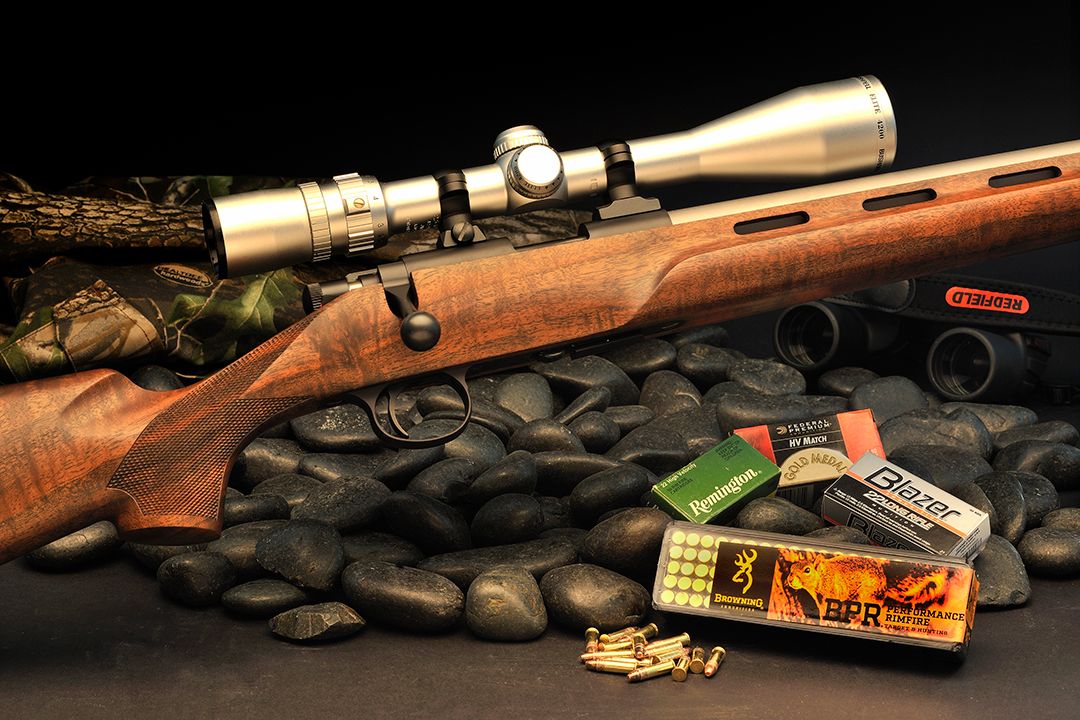
In my younger days, summer always meant a lot to me. There was fishing in the brook off the lane road bridge, shooting sparrows around the barn and walking down the road with “Lil’ Jimmy” rifles on our shoulder. Rimfire rifles of course.
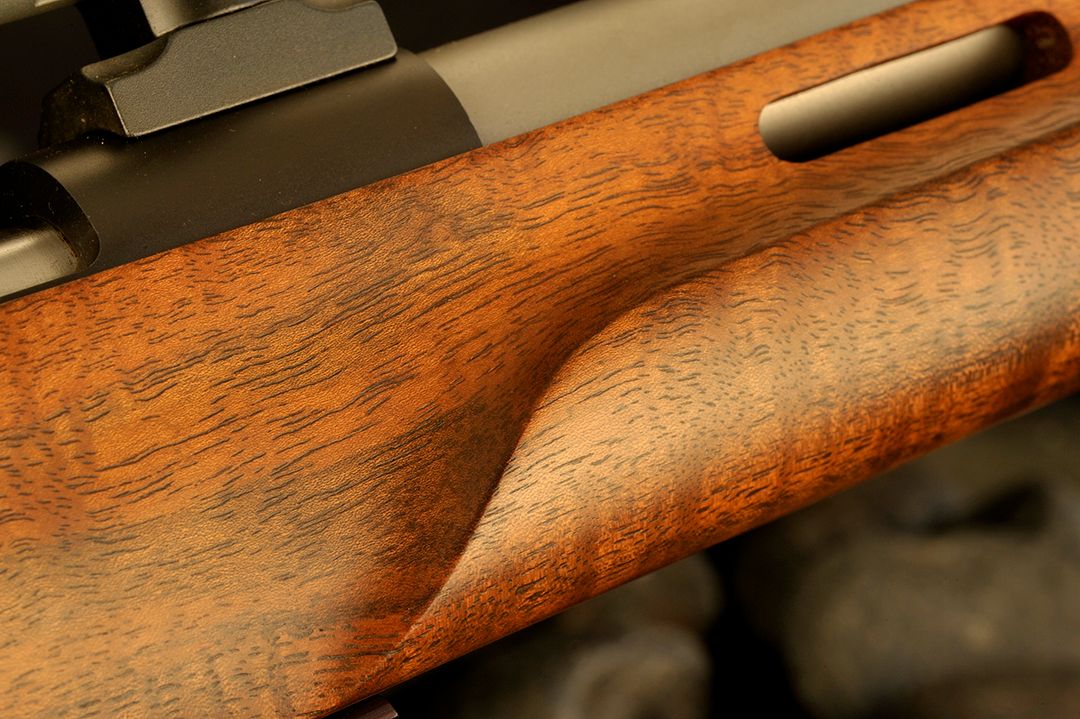
When it came to these rifles, the higher-grade guns always caught my attention. While there is nothing against straight-off-the-line production rifles, the custom or custom-production guns, like expensive cars, come under the “you get what you pay for” item. For our sample here, the Cooper Model 57M certainly comes under that category. My specific model is called the Montana Varminter and while there is the Varminter ($2,800) and the Varmint Extreme ($3,600), my model falls right in between this pair with a nice price point ($3,100) and many desired features.
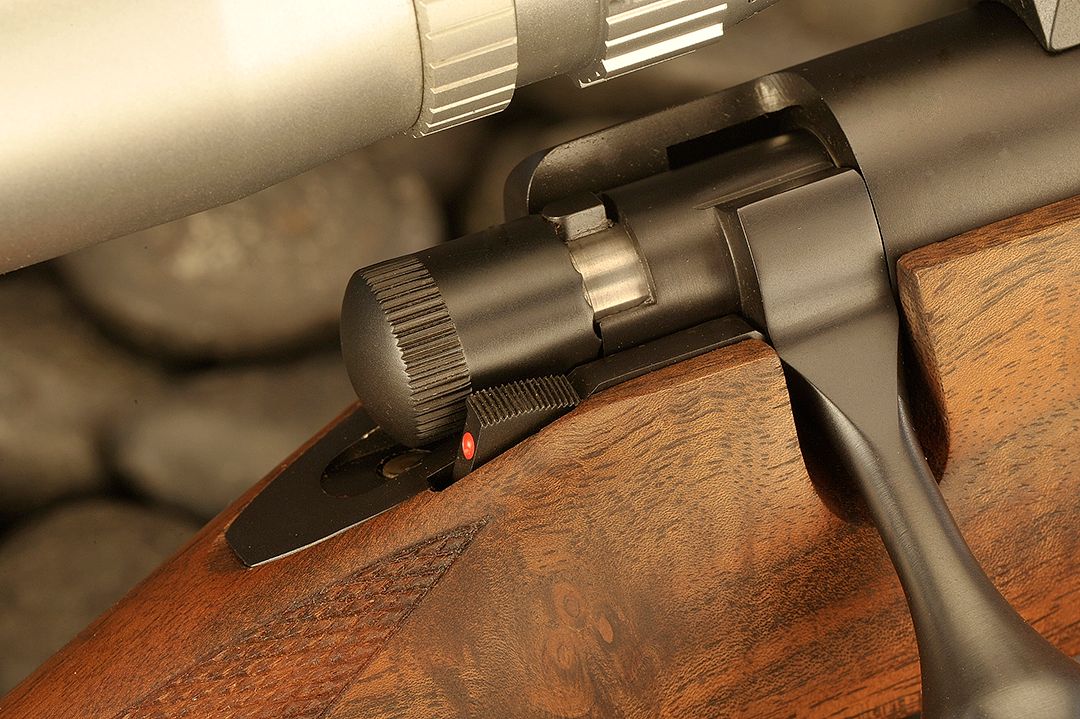
In 1993, the company went after the popular centerfire market with the introduction of the Model 21 Varmint Extreme in the .223 Remington, complete with a new stock and bolt design. From here, the list of rifles grew to include the Model 22, Model 38 and the Model 40; a four-shot repeater designed for the .22 Hornet. The subject of this article is the Model 57, which was added to the line in 1999 and became the Model 57M two years later chambering the .22 Long Rifle, .17 Mach 2, .22 WMR and the .17 HMR.
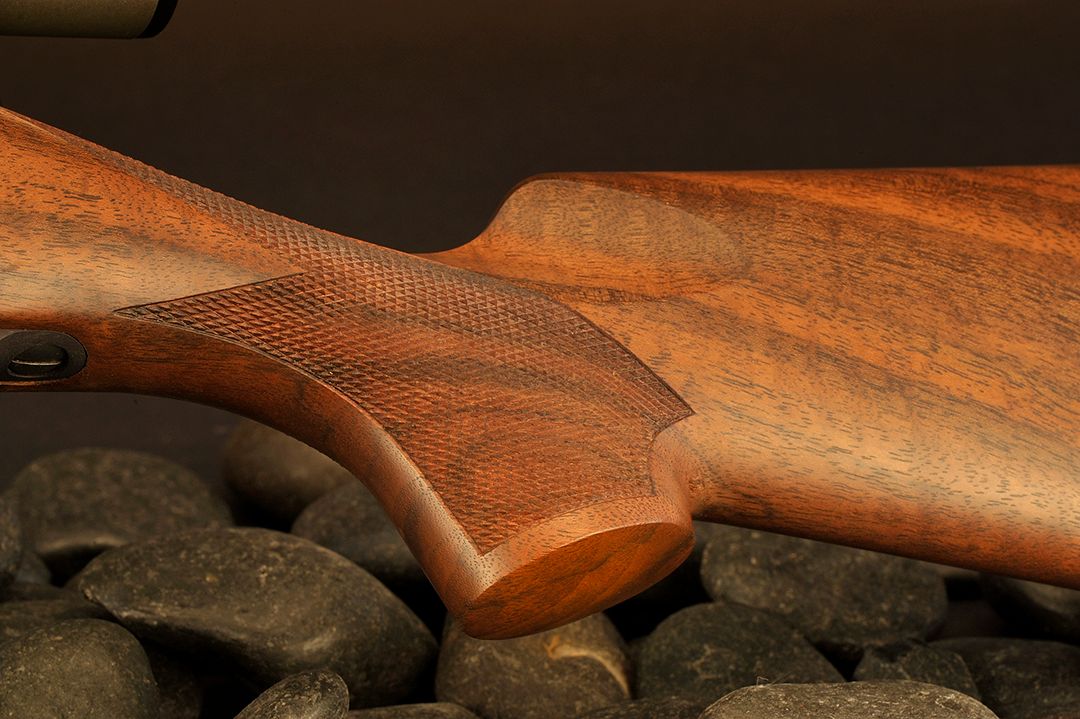
For the dedicated rimfire shooter, this series of rifles just has to be the gun for you. Starting out, my Montana Varminter was designed and made for the task at hand. The profile has that small game attitude from the tip of the muzzle back to the classic Pachmayr recoil pad. All of the components fit the picture from the stainless steel heavy barrel to the AA+ Claro stock. The lines are clean, crisp and right out of the box, this gun is ready to go.
While the .22 Long Rifle is not a long-range cartridge, this gun was made as a handy rifle, no matter the distance. Starting at the forend of the stock, it has a taper in both directions to help deflect brush on the tree line when walking from field-to-field. From here back, the stock has the now accepted 2-inch width as to place the gun in any position in the field for the shot. At first glance, this part of the gun feels rounded, but closer in, the very center of the stock is flat, perfect for any spontaneous rest in the field. Finger grips are there on both sides and three vents aid in keeping the barrel cool by convection in the event of sustained shooting. While I don’t see any problem with this using the .22 Long Rifle cartridge, this model is made in other calibers/cartridges, so barrel heating could be a problem with larger centerfire rounds.
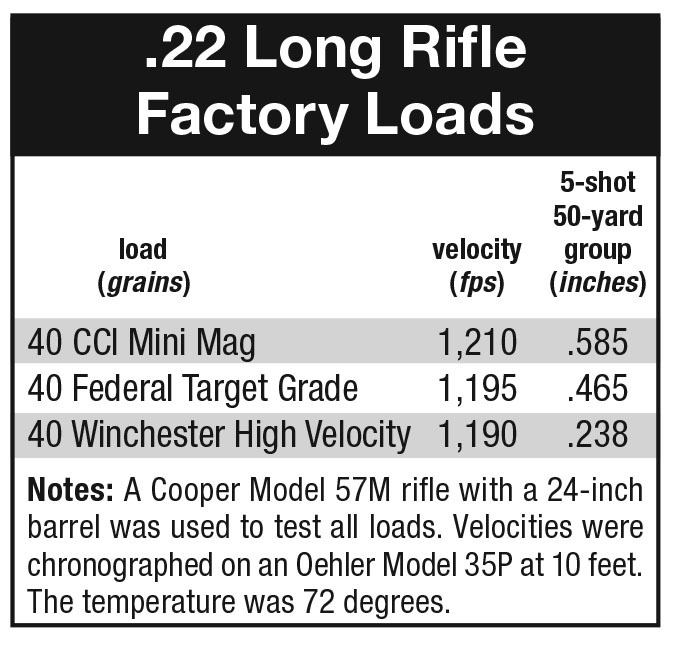
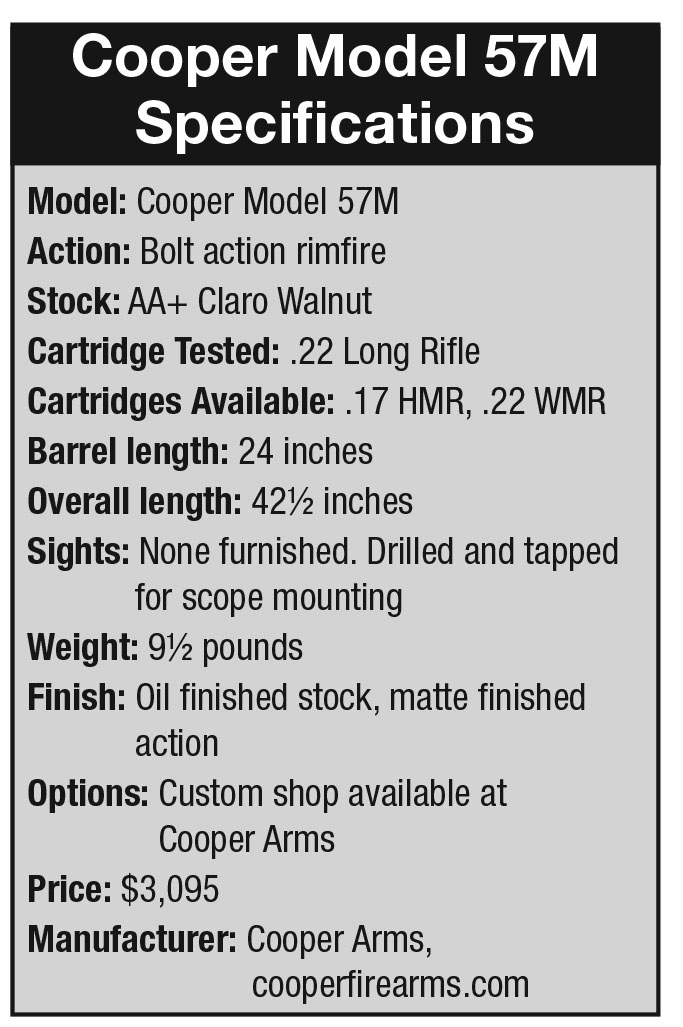
There seems to have been a lot of thought in the design of the stock from here back, and that is a good thing. Some may think the pistol grip is swept back too much, but using the gun on the bench or in the field, I found it just right for my needs. The hand checkering is very handsome on the grip and cut in a traditional point pattern that fits the physical looks of the gun. There is no pistol grip gap, so watch when rushing to get into the prone position too fast so as not to chip this part of the gun. Looking through the catalog, Cooper does list a full case colored or skeleton grip cap for protection on this part of the gun as an option.
Right behind the tang, there are flutes on either side of the stock followed by a classic type comb that follows out to the recoil pad. The stock is void of a line disturbing Monte Carlo comb and does not have a cheekpiece. Length of pull is 13¾ inches and the very select stock is finished in a hand-rubbed oil finish, perfect in every way. The Claro walnut stock has a pleasing grain, color and figure, which is totally appropriate for a gun in this price range. Keeping with gunmaking standards, the grain moves upward towards the action, is multicolored from orange to coffee with a bit of fiddleback emulating from the base of the stock to the comb.
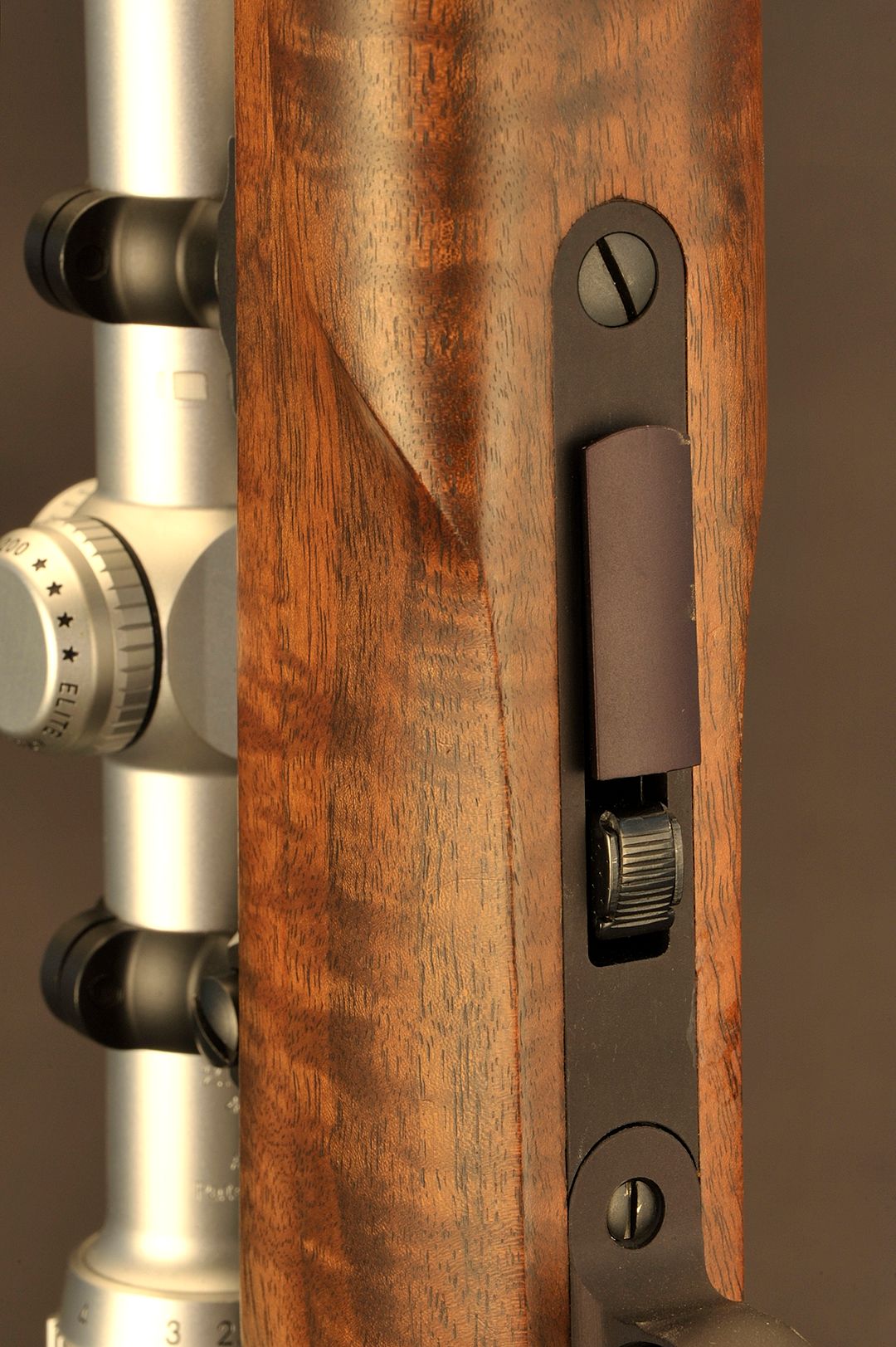
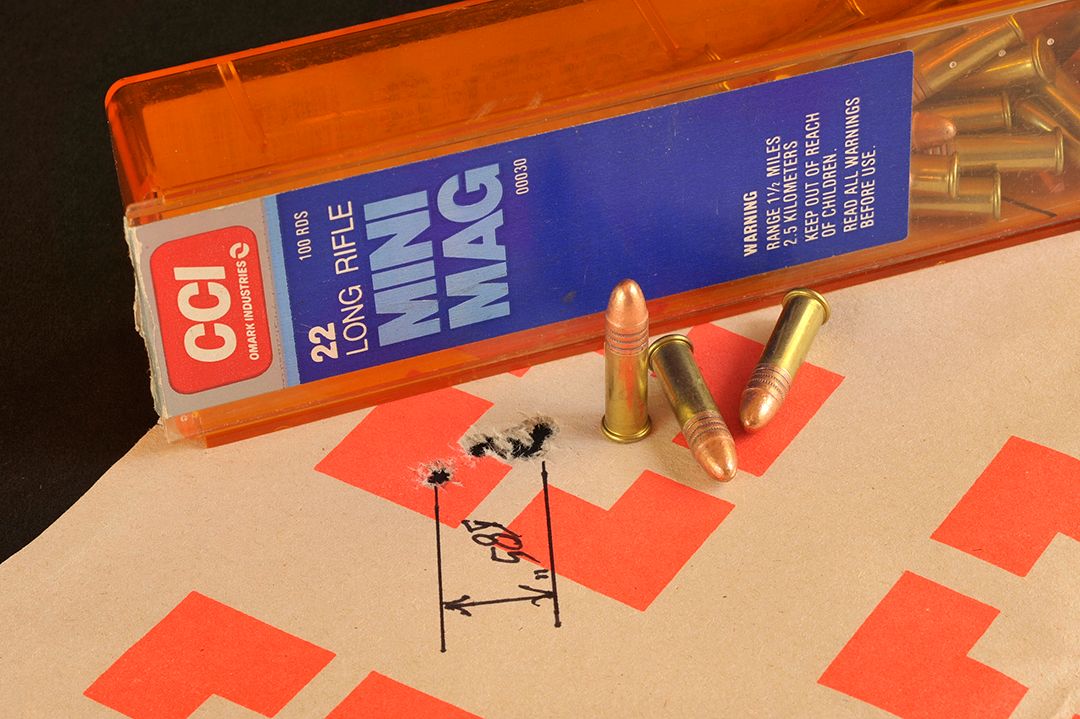
Cooper places its safety lever almost under the bolt shroud and one deft motion to the rear places the gun on safe with the option to operate the bolt to eject or replace rounds as need be. The receiver is tubular, finished in a matte blue/black and takes a variety of scope bases handily. To this, I mounted a Bushnell Elite 4200 with a power range of 2.5 to 10 and with an objective lens of 40mm. Since this is a full-sized rifle, this type and size of scope looks good topside, not to mention it is perfect for the .22 rimfire and the hunting I do with it.
At the range, the gun operated without a glitch in reference to loading, ejection and extraction. The bolt was smooth and never offered any resistance when shooting even in a hurried situation. Any rimfire ammunition is a pleasure to use especially in a gun of this caliber and workmanship. The groups shown in the accompanying photos are the best of three with the assortment of ammunition I used for testing the rifle. There is always one best and this time it was Winchester’s High Velocity brand with a group coming in a .238 inch at 50 yards. Second best was Federal’s Target brand with five shots going into .465 inch, followed by the CCI Mini Mag brand at .585 inch. The wind was calm with summer temperatures in the lower 70s.
To round out the morning, I found a box of Winchester .22 Short and some Remington Long ammunition in my range case. Needless to say, the Short has brought back memories of shooting sparrows in the barn since they would not penetrate the dimensional lumber (read thick) used in the older barns thus making holes in the roof. The .22 Long was never a big hit simply because I don’t think the hardware stores ever stocked them out in the country. In any event, the Short ammunition went into a group measuring .998 inch, while the Long ammo hit .856 inch.
Rounding out this report, I found this high-grade Cooper rifle topping the list of my expectations in appearance, quality and accuracy. If you want a lasting investment in a rimfire rifle, don’t look any further.

